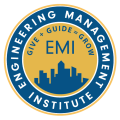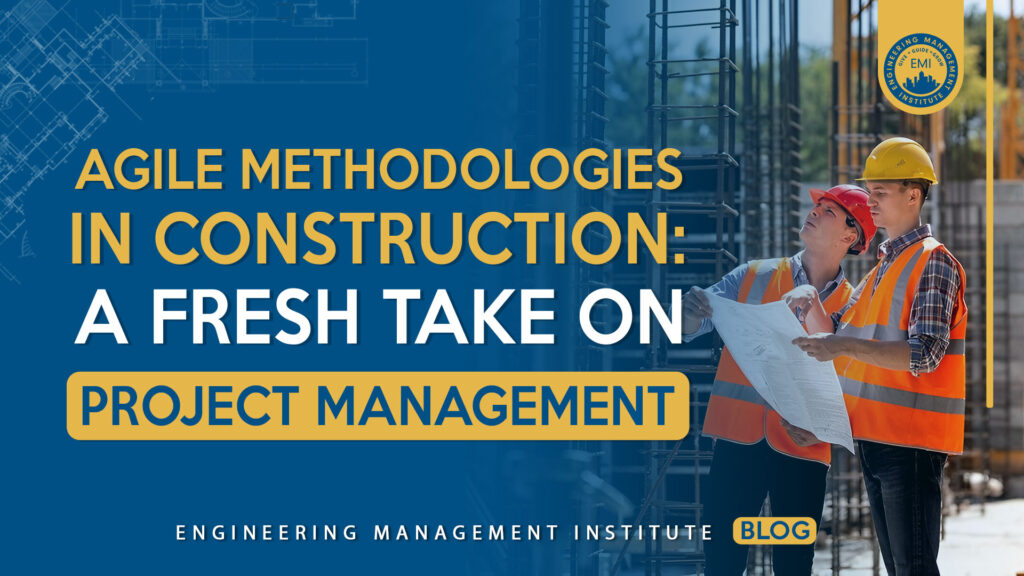Agile methodologies in construction are becoming increasingly essential in the AEC industry. The architecture, engineering, and construction (AEC) industry has long been known for its stiff processes and linear project management methods that sometimes feel like they’re set in concrete. But times are changing… With increasing complexity, tighter deadlines, and ever-evolving client needs, the industry is beginning to embrace agile methodologies. This approach promotes flexibility, iterative progress, and the ability to adapt on the fly, leading to better project outcomes and happier teams.
Understanding Agile Methodologies
So, what exactly are these agile methodologies everyone is talking about? Let’s break it down into bite-sized pieces:
1. Iterative Development: Think of this as the project version of a delicious layered cake. Instead of baking the whole cake at once and hoping for the best, teams break projects into smaller, manageable phases, or “sprints.” They focus on completing one layer before moving to the next, allowing for adjustments based on feedback at each stage.
2. Collaboration and Communication: Agile is all about teamwork. Regular check-ins, like daily stand-ups, keep everyone aligned on project goals and progress. It’s like a group huddle before the big game, where everyone knows what play to run.
3. Flexibility and Adaptability: The construction world can be unpredictable—think weather delays and surprise site conditions. Agile methodologies in construction enable teams to pivot quickly when project requirements or unexpected challenges arise, ensuring that they can always align with client needs throughout the project lifecycle.
Benefits of Agile Methodologies in Construction
Adopting agile methodologies in construction projects can yield several significant benefits:
1. Increased Customer Satisfaction: Agile methods are like a VIP pass for clients! By engaging clients throughout the project and incorporating their feedback, construction firms can ensure that the final product not only meets, but often exceeds expectations. Clients feel a sense of ownership in the process, as their input shapes the final outcome. This continuous engagement fosters trust and transparency, making clients feel heard and valued—like stars on the construction red carpet.
2. Enhanced Team Collaboration: Agile methods encourage collaboration among diverse teams, breaking down silos like a wrecking ball. By fostering a culture of teamwork, project managers can tap into a wealth of perspectives and expertise, leading to innovative solutions and effective problem-solving.
3. Reduced Time to Market: With incremental deliverables and shorter feedback loops, agile projects can adapt to client needs faster than traditional methods. This equates to a shorter time to market, giving firms a competitive edge in the fast-paced AEC landscape. Who wouldn’t love a speedy delivery service?
4. Better Risk Management: In the world of construction, risks are as common as hard hats. Agile methodologies help teams proactively manage these risks by assessing potential issues at each phase and implementing solutions before they snowball into bigger problems. This shift highlights the growing importance of Agile methodologies in construction.
Challenges to Implementation
Now, it’s not all sunshine and rainbows—adopting agile practices in construction does come with its challenges:
- Cultural Shift: Embracing an agile mindset requires everyone to be on board. Teams must be open to change and collaboration, which can sometimes be met with resistance. It’s like trying to get your cat to take a bath—challenging but totally worth it!
- Training and Skill Development: Many construction professionals are used to traditional project management methods. Investing in training and development to help everyone understand agile practices is crucial. Think of it as giving the team a shiny new toolbox full of exciting gadgets!
- Integration with Existing Processes: Agile methodologies need to mesh with existing processes and regulations. Finding that balance can sometimes feel like fitting a square peg in a round hole, but with a few adjustments, the benefits will be well worth the effort.
Best Practices for Agile Implementation
To successfully integrate agile methodologies in construction project management, consider these best practices:
1. Start Small: Begin with pilot projects to test agile practices on a smaller scale. It’s like dipping your toes into the water before diving headfirst.
2. Foster Leadership Support: Strong leadership is key to driving the cultural shift needed for agile adoption. Leaders should champion agile principles and provide support and resources to teams, acting as enthusiastic cheerleaders.
3. Invest in Training: Equip team members with the knowledge and skills they require for agile success. Training programs tailored to agile methodologies can boost confidence and understanding.
4. Encourage a Collaborative Environment: Create opportunities for open communication, both within teams and with external stakeholders. Regular check-ins and feedback loops help build a team-oriented culture where everyone feels empowered to contribute.
Real-World Scenario: Agile in Action
Let’s take a peek at a construction project involving the renovation of a historic building. The project team adopts agile methodologies in construction by dividing the renovation into several phases, like a well-orchestrated dance routine. They start with an initial assessment, then move on to structural updates, and finally, interior modifications. Each phase lasts a few weeks, and at the end of each phase, the team holds a lively review meeting with stakeholders to discuss progress and gather feedback—think of it as a mini-celebration of accomplishments!
Managing Risks and Constraints
Of course, no project is without its hiccups. Here’s how the team navigates some potential risks while keeping everything on track:
1. Scope Creep: During one of those lively review meetings, the owner suggests some changes to a common area based on a new, creative vision. While agile allows flexibility, too many changes can lead to scope creep—where the project’s demands expand beyond what was initially agreed upon. To keep this in check, the project manager implements a clear change management process. Any proposed changes are carefully evaluated for their impact on scope, keeping everyone on the same page as synchronized swimmers in a routine.
2. Schedule Risks: Agile encourages responsiveness to client feedback, but frequent changes can throw a wrench into the timeline. To combat potential scheduling risks, the team employs timeboxing—establishing fixed periods for each sprint. By setting well-defined deadlines for each phase, they ensure that adjustments won’t derail the overall schedule. The project manager also uses sprint reviews to track progress and recalibrate timelines, allowing them to accommodate changes while keeping everything on track.
3. Budget Constraints: Budget challenges can pop up, particularly if unexpected changes require additional resources. To handle this, the construction team sets a clear budget for each phase based on initial estimates. Regular financial assessments at the end of each sprint help to evaluate spending and keep it aligned with the agreed budget. By using transparent tracking tools and conducting regular budget reviews, the team can identify potential overruns early on and make informed decisions—no surprises here!
By incorporating these strategies into their agile framework, the team maintains control over scope, schedule, and budget while embracing iterative development. The agile process proves advantageous when accommodating necessary adjustments without losing sight of the owner’s vision.
Conclusion
The construction industry is on the brink of a significant transformation as it embraces agile methodologies in construction. By adopting this flexible and collaborative approach, firms can drive innovation, improve project outcomes, and better meet the ever-evolving needs of clients. As the AEC landscape continues to change, those who adapt and integrate agile practices into their project management strategies will be well-equipped to thrive in a competitive environment. So let’s roll up our sleeves and get building—the agile way!
Resources:
https://pmaconsultants.com/insights/how-to-use-agile-project-management-in-construction/
https://www.knack.com/blog/blog-agile-in-construction/
https://businessmap.io/agile/industries/agile-construction
https://www.pmi.org/learning/library/agile-software-applied-to-construction-9931
https://www.youtube.com/watch?v=OgC-gMtAaww
https://www.youtube.com/watch?v=-Y_hWMT2srY
About the Author:

Most recently, during his time working for the public sector, he has taken the role of Public Works Operations Manager. There he led quite a few public infrastructure rehabilitation projects and implemented new asset management technologies at a very young age. It is here that the passion for “fixing what’s broken” has developed.
Please leave your comments, feedback or questions in the section below.






